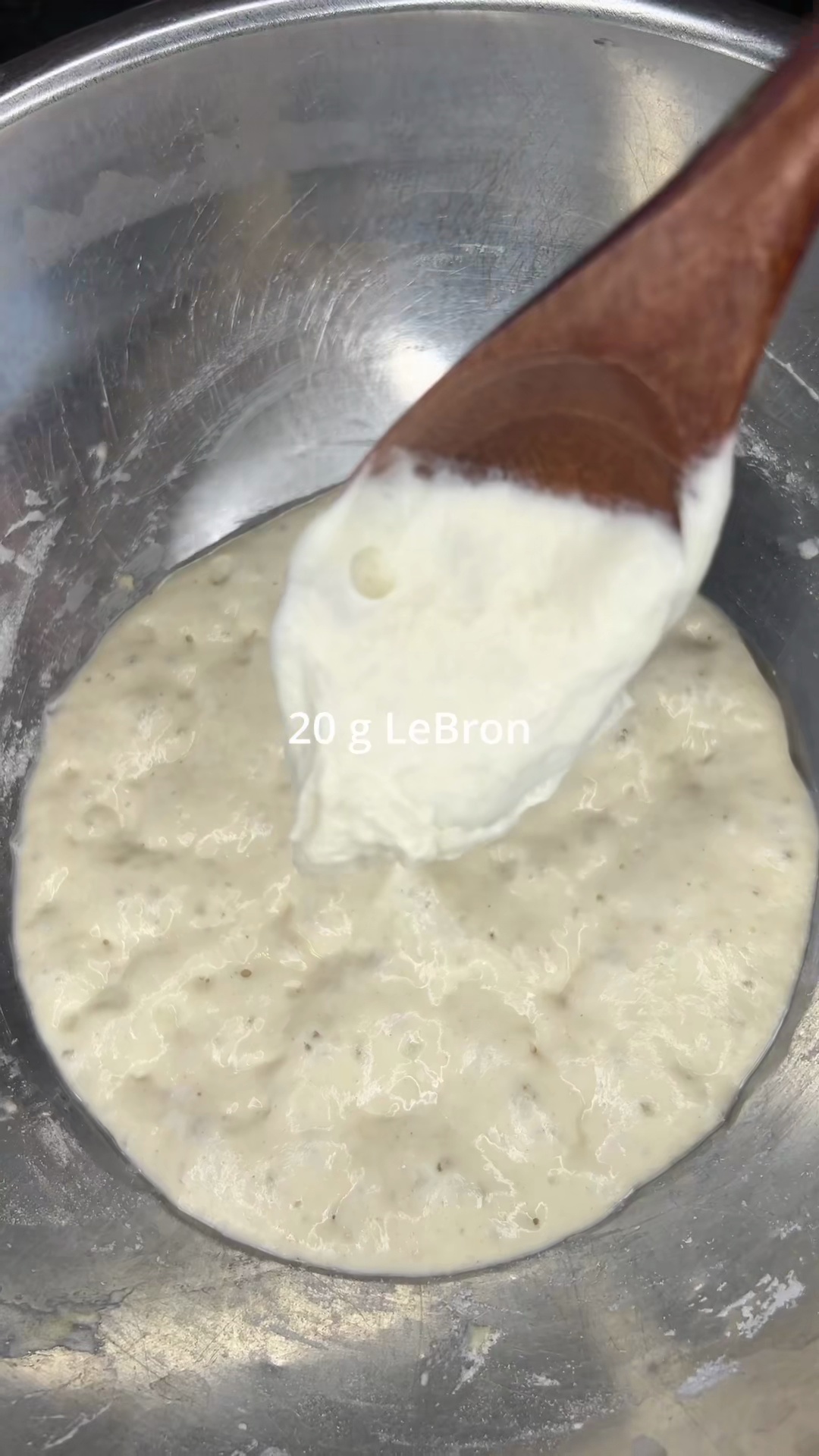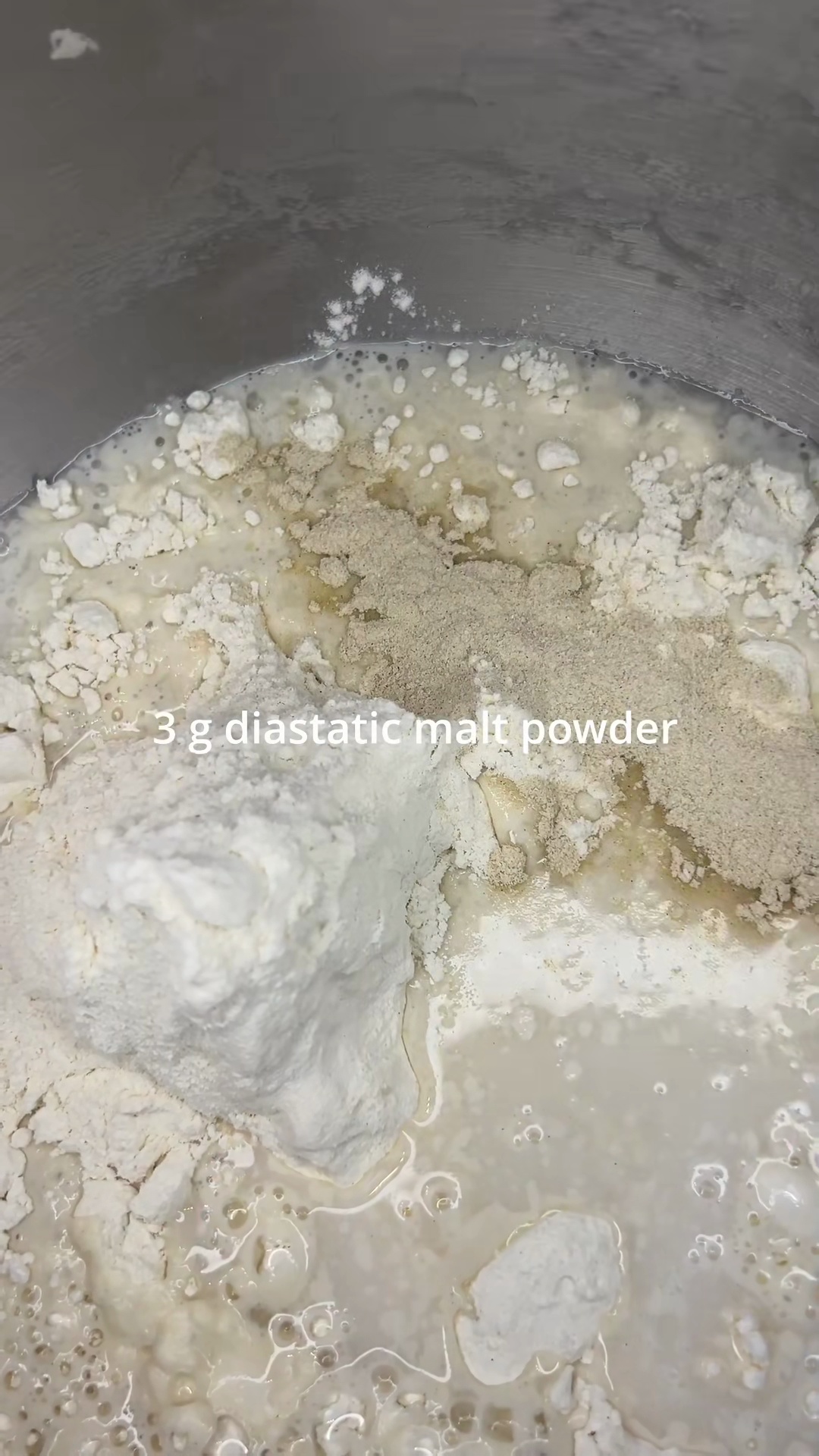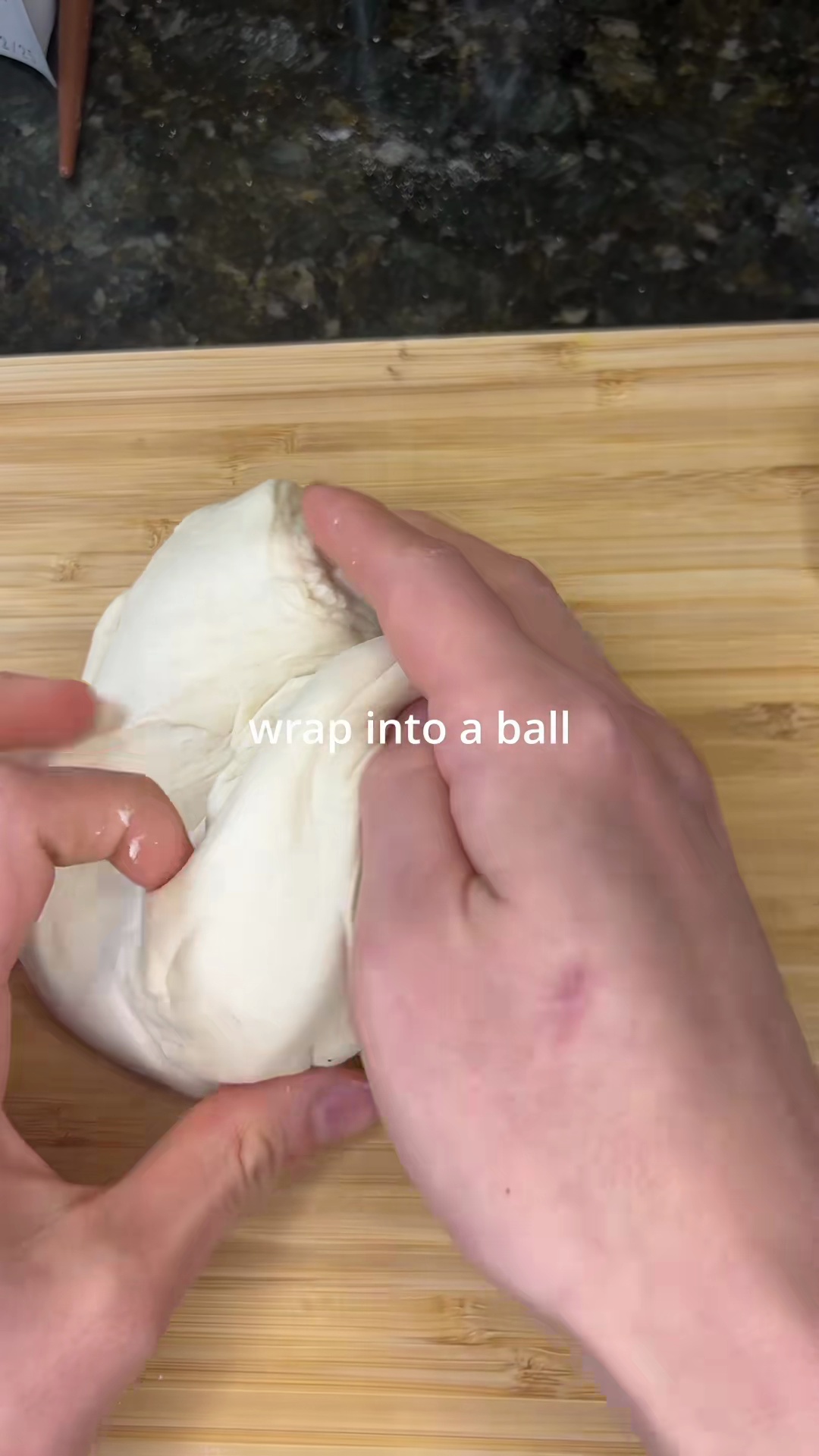Back to Italian Recipes
Author:
tdk0420
TikTok
993K
68K
Sourdough Pizza Dough for Two 15-16 Inch Pies
This recipe guides you through making a delicious sourdough pizza dough that yields enough for two substantial 15-16 inch pizzas. Combining active dry yeast with poolish and sourdough starter, this dough develops incredible flavor and a perfect chew through a process that includes initial mixing, stretch and folds, and a crucial long, cold fermentation. While the active preparation time is minimal, allow for significant passive time for the dough to ferment and mature, resulting in superior taste and texture.
#pizza
#sourdough
#dough
#recipe
#bread
#baking
#homemade
#italian
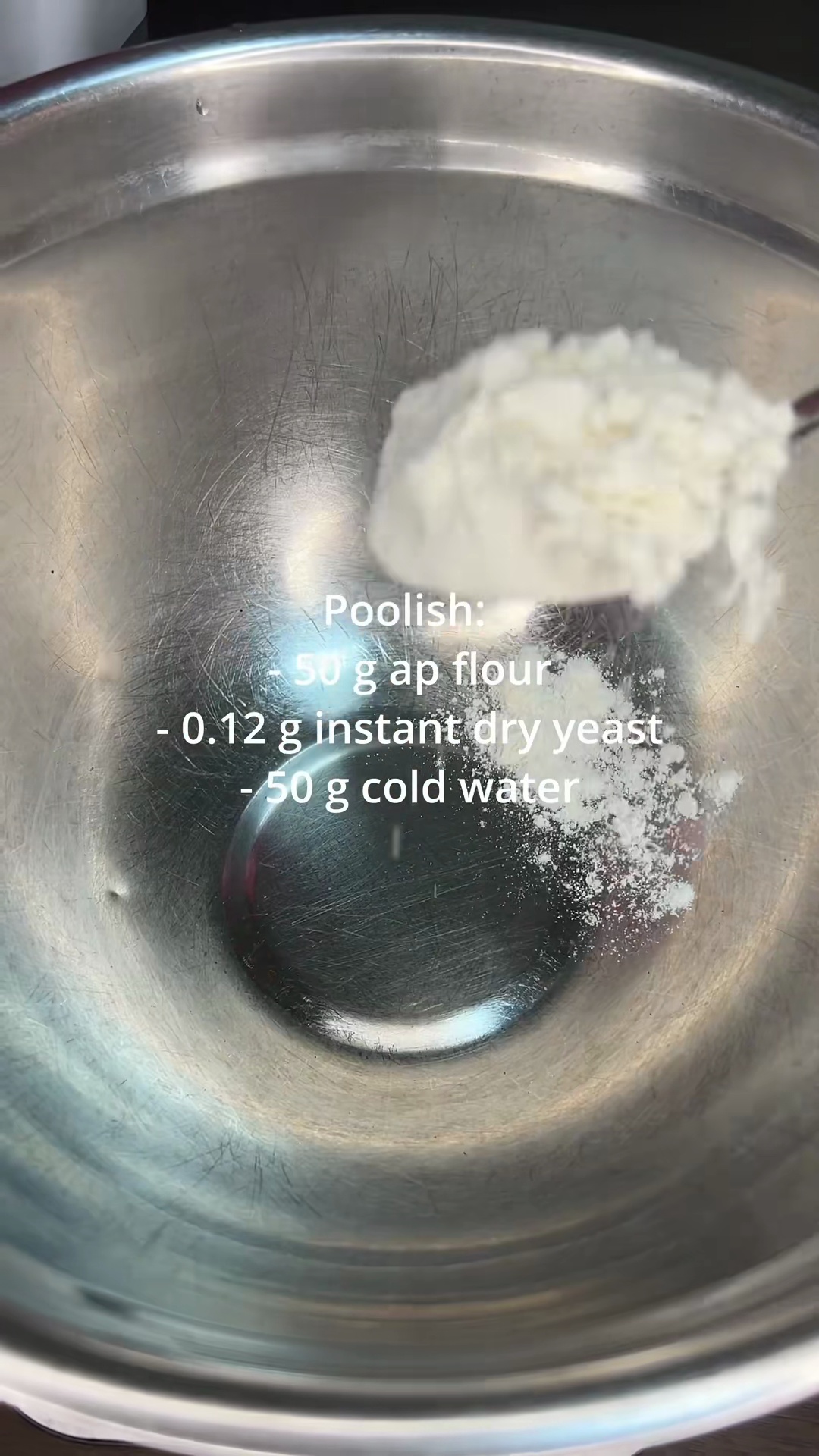
Mixing all ingredients for the pizza dough
Recipe Information
45m
Prep Time
30m
Cook Time
1h 15m
Total Time
8
Servings
Medium
Italian
English
Nutrition (per serving)
180
Calories
6g
Protein
37g
Carbs
1g
Fat
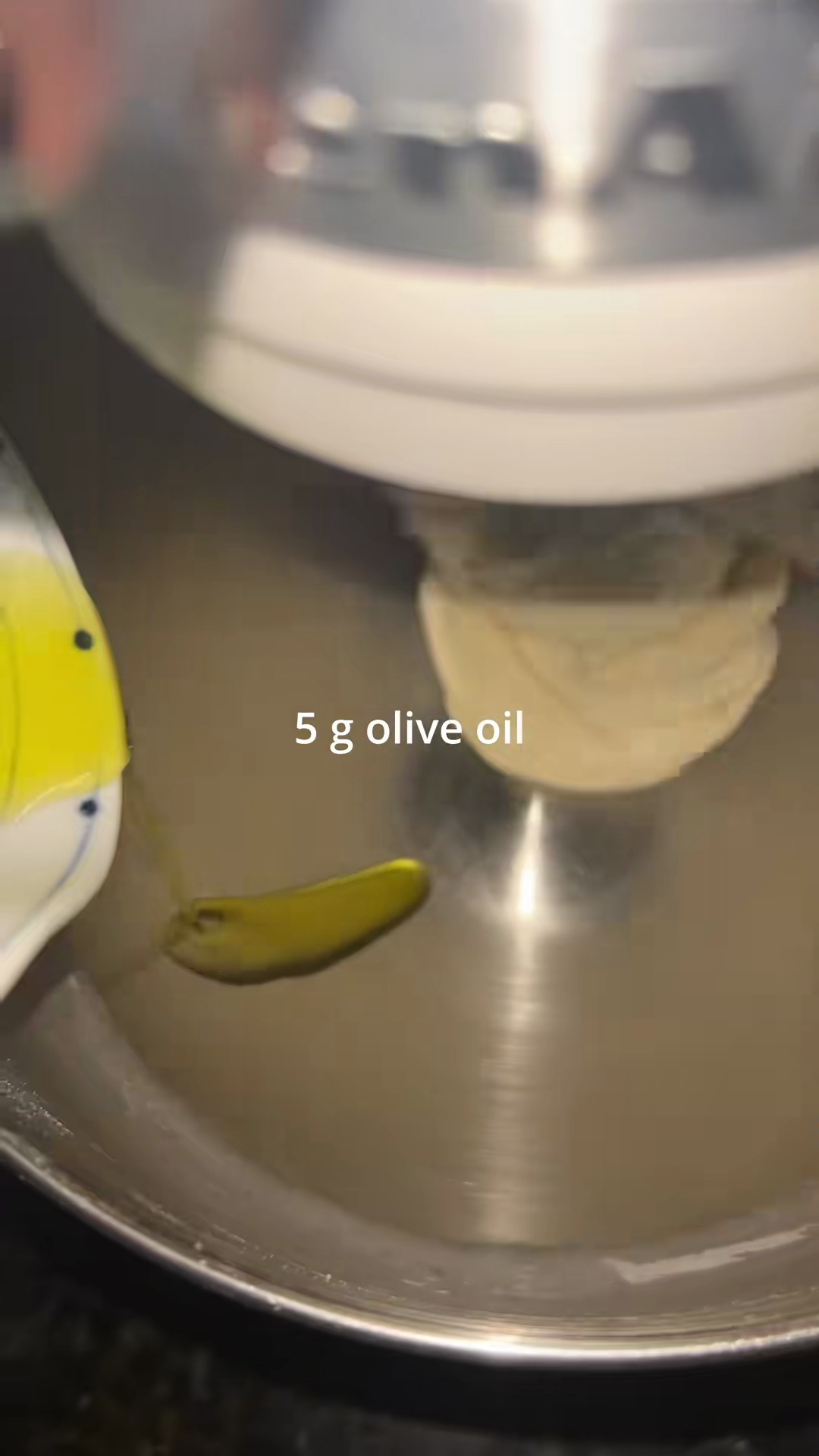
Dough after initial stretch and folds
Ingredients
Servings: 8
💡 Tip: Check off ingredients as you add them to keep track of your progress!
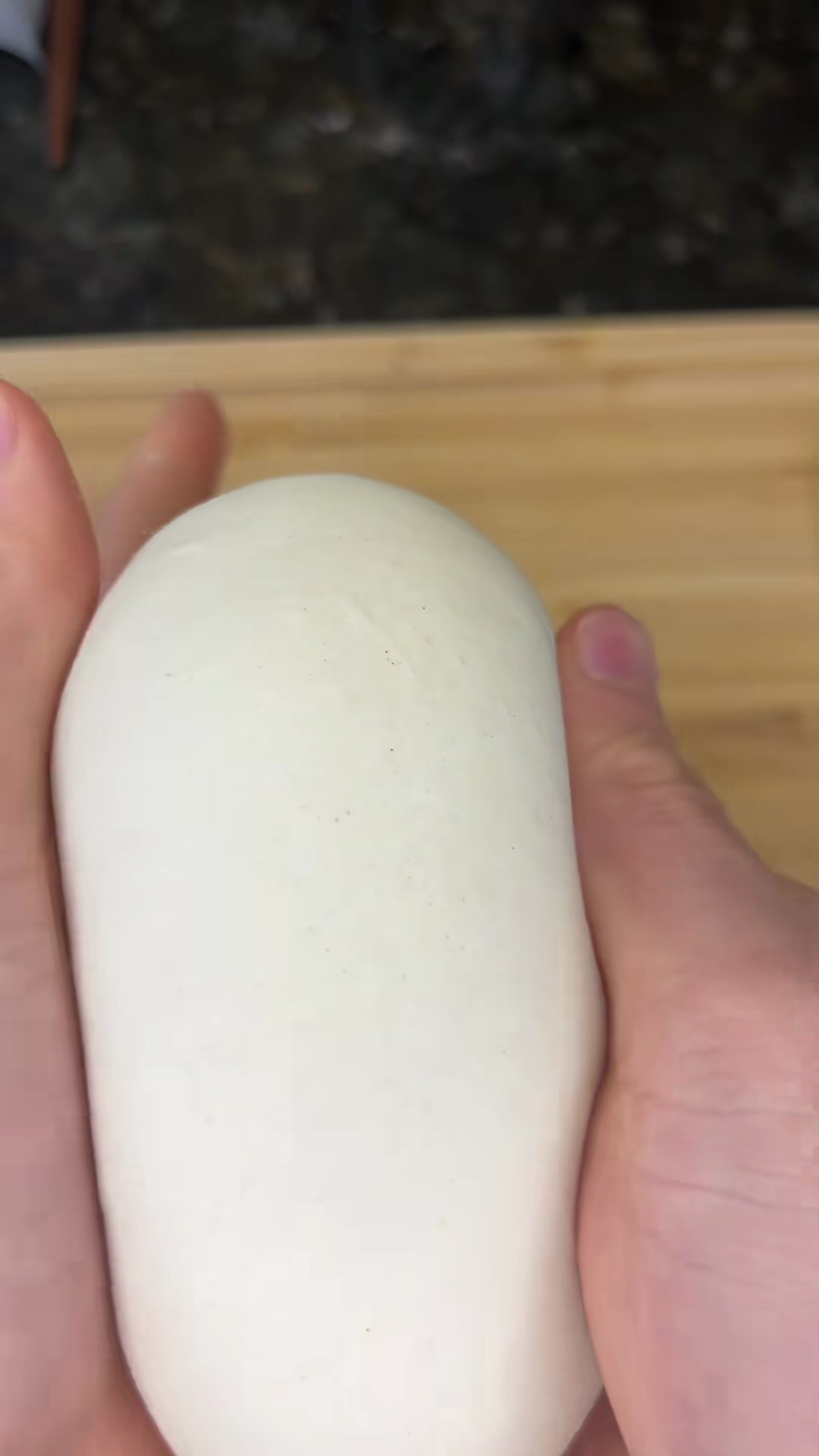
Shaped pizza dough balls ready for fermentation
Instructions
0/6 completed
0%
💡 Tip: Click on any step to mark it as completed and track your cooking progress!



